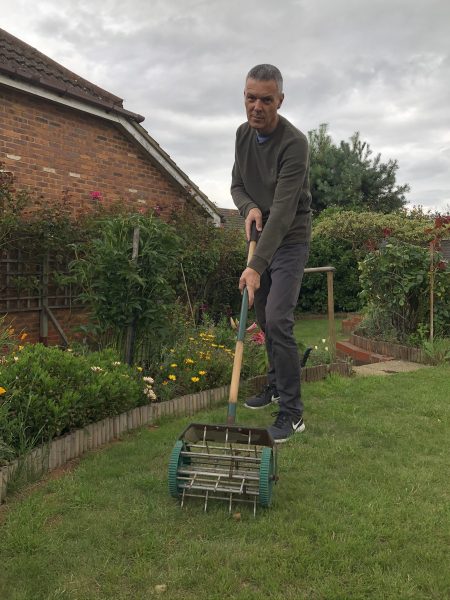
A lush and healthy lawn transforms an ordinary yard into an attractive environment to relax or entertain guests. A key component to maintaining that healthy lawn is a process called aeration. Lawn aeration involves perforating the soil with small holes, allowing air, water, and essential nutrients to penetrate to the grassroots. This contributes not only to the appearance of your lawn but also its overall health.
Homeowners and landscaping enthusiasts are often conscious of the need to feed, water, and mow their lawn, but lawn aeration is an element that can be overlooked. Yet, it’s crucial in creating a truly thriving yard. By understanding the importance of lawn aeration and the factors that contribute to its success, you can transform your patch of grass into an impeccable landscape.
Key Takeaways
- Lawn aeration promotes a healthy lawn by allowing air, water, and nutrients to reach grassroots.
- Choosing the right time and type of aerator for your lawn ensures optimal results.
- Proper lawn care after aeration helps maintain a strong, flourishing lawn.
Understanding Lawn Aeration
When it comes to maintaining a healthy and vibrant lawn, aeration plays a crucial role. As a gardener, I find that aerating my lawn improves air circulation and gaseous exchange between the soil and the atmosphere.
Lawn aeration involves the process of creating small openings or holes in the soil, which allows air and oxygen to reach the grass’s root system. This not only strengthens the roots but also promotes healthy growth of the grass. I’ve noticed that regular aeration contributes to a thicker and more robust lawn, as it provides a better environment for nutrients and water to be absorbed.
Over time, soil can become compacted, which suffocates and restricts the growth of the roots. When I aerate my lawn, it helps relieve compaction and allows the root system to expand, improving the overall health of the grass.
Another benefit of lawn aeration is that it encourages the breakdown of thatch. Thatch is a layer of dead grass, roots, and other organic debris that accumulates on the surface of the soil. Small amounts of thatch can be beneficial, providing insulation and moisture retention, but too much can hinder air circulation and prevent gaseous exchange. Aeration efficiently breaks up the thatch, ensuring proper air flow and nutrient absorption for the grass.
In summary, lawn aeration is a vital practice for maintaining a healthy lawn as it allows for improved air circulation, gaseous exchange, and root growth. By ensuring my lawn is aerated regularly, I can enjoy a thicker, greener, and more vibrant garden all year round.
Why Aerate Your Lawn
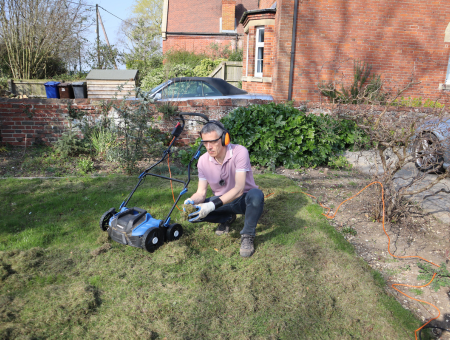
When it comes to maintaining a healthy lawn, aeration plays a key role. I’ve found that aerating my lawn helps to combat common issues such as compaction, poor drainage, and lack of oxygen. In this section, I will discuss the benefits of lawn aeration and how it can improve the overall health and appearance of your lawn.
Soil compaction is a common problem for many lawns, especially those with heavy foot traffic or clay soils. Compacted soil restricts the movement of water, nutrients, and oxygen, which can lead to poor grass growth and a lacklustre appearance. By aerating my lawn, I am able to break up compacted soil, allowing for better access to essential resources for my grass’s growth.
Waterlogged lawns are another issue that I’ve encountered, especially during periods of heavy rainfall. Poor drainage can lead to standing water on the surface, creating puddles and making the lawn look unappealing. Aerating the lawn can help improve drainage by creating channels for water to move through, preventing surface sealing and reducing the risk of waterlogged areas.
In addition to improving drainage, aerating my lawn helps to increase the amount of oxygen available to the grass roots. Compact soil and surface sealing can limit the amount of oxygen reaching the roots, resulting in weak and slow-growing grass. Lawn aeration allows for increased airflow, providing the necessary oxygen for healthy root growth.
To reap the benefits of lawn aeration, it’s essential to choose the right method and timing. Ideally, lawns should be aerated during the growing season, when the grass can recover quickly. In addition, it’s best to aerate when the soil is moist – not too wet, not too dry. This ensures that the aeration process is efficient and effective at breaking up compacted soil and allowing for improved drainage and oxygenation.
In conclusion, aerating my lawn is an essential step in maintaining its health and appearance. By addressing common issues such as compaction, poor drainage, and lack of oxygen, I can enjoy a thriving, attractive lawn for years to come.
When to Aerate Lawn
I find that the best time to aerate lawns is during periods of active growth. For most grass types in the UK, this happens during spring and autumn. To be precise, I prefer September as the ideal month for aeration. This is because the soil is usually moist and the temperatures are moderate, creating an ideal environment for grass recovery.
Aerating during spring provides ample time for grass to recover before the summer heat arrives. However, it is crucial to avoid aerating during the heat of late spring and summer, as the stress caused by aeration may lead to scorched and damaged grass in these conditions.
In autumn, the cooler weather encourages grass growth, while the soil tends to retain more moisture—ideal conditions for successful aeration. September, in particular, offers optimal aeration conditions, as the warm soil and consistent rainfall create favourable circumstances for root development.
It’s important to consider the weather conditions before committing to lawn aeration. I always make sure that the soil is moist, but not overly saturated, as this can lead to compaction rather than aeration. Ideally, the lawn should be aerated a day or two after a rain shower or after irrigation, to achieve perfect soil moisture levels.
In summary, the most suitable times for lawn aeration are spring, with a preference for September in the autumn season. Monitoring weather conditions is essential to provide an optimal environment for grass recovery and growth during aeration.
Types of Lawn Aerators
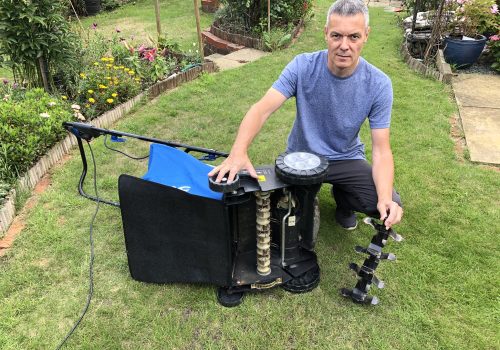
As a lawn care enthusiast, I’ve found that there are several types of lawn aerators available in the market, each serving a specific purpose. In this section, I’ll briefly discuss the most common types of aerators, which include machine aerators, hollow tine aerators, plug aerators, aerator shoes, and hand aerators.
Machine aerators are generally considered the most efficient option for larger lawns. These devices come in two main categories: solid tine and hollow tine. Solid tine aerators use spikes to create holes in the soil; however, they can compact the ground over time. Hollow tine aerators, like the rolling lawn aerator or the core or plug aerator, remove small plugs of soil, improving the soil structure and promoting better air and water circulation in your lawn.
Plug aerators are a specific type of hollow tine aerator that removes plugs or cores of soil from the ground. These machines can either be self-propelled or towed behind a ride-on mower. They’re excellent for revitalising heavy clay soils as they help break down compaction, allowing moisture, nutrients, and air to reach the roots.
A convenient, affordable alternative to machine aerators are aerator shoes. Lawn aerator shoes are simple, strap-on devices with spikes that puncture the soil as you walk around your lawn. While not as effective as a dedicated machine, they offer a low-cost option for smaller lawns and occasional use. However, they mainly create holes using solid tines, so the benefits are less pronounced than with hollow tine aerators.
Lastly, for those who prefer a hands-on approach or have smaller lawn areas to treat, hand aerators might be the best choice. These easy-to-use tools come in various designs, such as hand-held hollow tine aerators or solid tine models. Using these tools can be more labour-intensive than using machines, but they offer a high level of control and precision.
So, you have machine aerators, hollow tine aerators, plug aerators, aerator shoes, and hand aerators available as options. Choosing the right type of lawn aerator for your garden mainly depends on your lawn size, soil composition, and your personal preferences.
How to Aerate Your Lawn
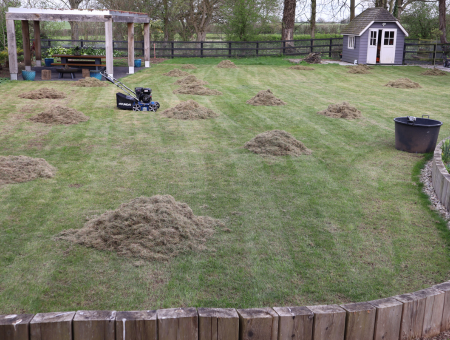
When it comes to aerating your lawn, I’ve found that timing is crucial. The best time to do it is when the soil is moist, but not too wet or too dry. Getting the moisture levels just right will make it much easier to penetrate the ground with a fork or garden tool. I usually aerate my lawn during the spring or autumn seasons when the soil tends to be at its most suitable state.
To begin the process of aerating my lawn, I first mow it to a manageable height using my trusty lawnmower. This helps to reduce thatch and moss which could interfere during the aeration process. After mowing, I use a scarifier to remove any additional thatch or moss. Scarifying also prepares the lawn for aeration by creating space for the air, water, and nutrients to penetrate through.
Once I’ve cleared my lawn of any unwanted debris, I choose an appropriate aerating method depending on the size and needs of my lawn. Smaller gardens or those with minimal compaction may only require spiking, which involves using a garden fork or spike aerator to create holes in the ground. While spiking, I take care to space the holes about 10-15 centimetres apart for the best results.
For larger lawns or those with more severe compaction, I opt for a more comprehensive aeration technique called chisel tining. This method makes use of solid tines or slitter, which removes cores of soil from the ground and leaves gaps for air and nutrients to reach the grassroots. The cores can be left on the lawn to break down naturally or collected for composting.
In my experience, regular lawn aeration contributes to a healthier and more resilient garden. By following these steps and choosing the appropriate method, I can maintain a lush and vibrant lawn all year round.
Improving Soil Conditions
In my experience, one of the key aspects of lawn aeration is addressing and improving soil conditions. If you’ve noticed your lawn struggling despite regular watering and fertilising efforts, it’s possible that poor soil conditions are to blame.
For instance, clay soil often leads to poor drainage and can cause water to pool on the surface, suffocating the grass roots. To combat this, I usually recommend incorporating organic materials, such as compost or well-rotted manure, to increase the soil’s ability to drain.
On the other hand, if you’re dealing with compacted soil, the main issue is the lack of air and water circulation. In this case, I find that using a core aerator to remove small plugs of soil provides the best results. After aerating, top dressing with a mix of sand and compost helps to further alleviate the compaction.
Drainage can also be affected by sandy or light-textured soils, which often struggle to retain water. To address this, I suggest applying a top dressing mix of loam, compost or other organic matter to improve the soil’s water retention capabilities.
For a balanced lawn, it’s important to remember that both water and fertilisers play key roles. I usually recommend testing your soil’s pH to see if any amendments are necessary. Adding lime or sulphur to the soil can help neutralise pH levels, which means your grass will benefit from the nutrients you’re providing.
Proper care and maintenance can certainly lead to a healthier lawn. With the right approach to soil improvement, your lawn will have better access to both water and vital nutrients, resulting in a more robust and resilient green space.
Lawn Care After Aeration
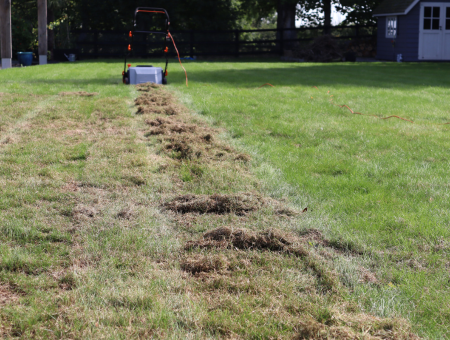
After aerating my lawn, I like to follow several essential lawn care steps to ensure the best results. Aeration promotes healthy root development. Therefore, proper lawn care afterwards is crucial for the effectiveness of the aeration.
Firstly, I overseed my lawn by spreading grass seed evenly across the area. This helps to fill in any bare spots and promotes a thicker, more vibrant lawn. The holes created by the aeration process provide a direct route for the seeds to come into contact with the soil.
I then feed my lawn, usually with a slow-release fertiliser. This provides the grass with essential nutrients and supports root growth. Feeding promptly after aeration is vital, as it allows the fertiliser to penetrate the root zone of the grass more effectively.
Next, I turn my attention to watering. Consistent watering is crucial following aeration. I typically use a sprinkler to evenly distribute water and make sure all seeds and fertiliser have achieved good soil contact. Light daily watering is recommended after overseeding to support germination.
As for weeding, I find it effective to stay on top of invasive plants that may compete with the seeded grass. By removing them, I avoid unnecessary competition for resources and create an ideal environment for grass growth.
To sum up, after aerating my lawn, I focus on overseeding, feeding, weeding, and watering. By performing these tasks, I maintain a healthy and lush lawn throughout the growth season.
Signs of a Healthy Lawn
As a lawn care enthusiast, I consider a few key indicators to gauge the health of my lawn. A healthy lawn exhibits a vibrant green colour which indicates that it is receiving an ample supply of nutrients. To ensure proper nutrient absorption, it is vital to maintain a robust root zone, as roots are instrumental in taking up water, air, and nutrients from the soil.
In addition to the green hue, a flourishing lawn exhibits dense grass coverage. This is indicative of a well-established grassroots system that allows for healthy nutrient distribution. I observe that the grass’s root structure plays a pivotal role in the overall health and vigour of the lawn. To facilitate strong root growth, I make certain that my lawn has adequate water supply, nutrient-rich soil, and access to oxygen.
Moreover, proper seed selection is crucial to the success of any lawn. When choosing a seed variety, I consider factors such as climate, soil type, and the intended use of the lawn. This helps me establish a lawn that is well-suited to my region’s conditions and is more likely to thrive.
Overall, keeping an eye on these factors helps me achieve a healthy, green lawn. Regular maintenance, including watering, fertilising, and lawn aeration, ensures that my lawn continues to have access to the vital nutrients, water, and oxygen it needs.
Potential Problems and Solutions
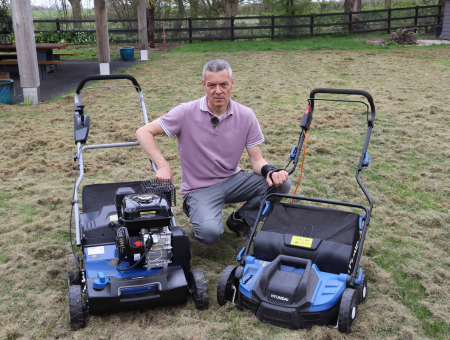
One common issue I’ve encountered in my lawn is the development of problem areas, such as sparse or stunted growth. These are often caused by compacted soil, which makes it difficult for grass roots to penetrate and access the necessary nutrients. Aeration is an effective method to address this problem. By creating holes in the lawn, I allow air, water, and nutrients to reach the grass roots, promoting healthier growth.
However, it’s essential to avoid damaging the grass while aerating. I’ve learned that employing the correct equipment and technique can minimise the risk of damage. For example, using a spike aerator rather than a core aerator can cause soil compaction rather than relieving it. I prefer using a simple garden fork or a lawn aerator designed specifically for this purpose.
Disease prevention is another essential aspect of lawn aeration. I’ve found that aerating during the right time of year can help reduce the risk of disease spreading through the lawn. For instance, I generally aerate during the cooler months when diseases are less active and when grass is experiencing natural growth spurts.
Foot traffic can also cause wear and tear to the lawn, leading to thinning and bald patches. To address this issue, I usually rotate the areas where people walk and play, giving the grass time to recover. Additionally, I occasionally use a top dressing material after aerating, consisting of sand, loam, and organic matter, to help promote thicker, fuller growth in these high-traffic areas.
In summary, the key to a healthy lawn is regular aeration to combat potential problems such as compaction, wear, and disease. By using the appropriate equipment and techniques, I ensure that my lawn stays green, lush, and inviting.
Frequently Asked Questions
In this section, I’ll address some frequently asked questions about lawn aeration, providing confident and knowledgeable answers with a clear, neutral voice.
At what point should I aerate my lawn? Aerating your lawn is best done during the growing season, which is typically spring or autumn in the UK. This timing will allow the grass to recover quickly, as it is in its most active phase.
Is it necessary to aerate my lawn multiple times? Yes, it’s a good idea to make multiple passes when aerating your lawn. This approach ensures more even coverage and helps break up heavily compacted soil much more effectively.
What is the step-by-step guide for lawn aeration?
- Before starting, ensure your lawn has been mowed and the grass is slightly damp.
- Choose the appropriate type of aerator, either a spike aerator or a plug aerator, for your specific lawn conditions.
- Begin aerating the lawn. Move in straight lines and avoid overlapping the passes by making sure that each row is adjacent to the previous one.
- Once you’ve completed the first pass, practice multiple passes by crossing the previous aeration paths at a different angle for better soil coverage.
- After aerating, fill the holes with a nutrient-rich compost or soil mix to promote healthy lawn growth.
How often do I need to aerate my lawn? The frequency of lawn aeration depends on your lawn’s soil type and usage. Lawns with heavy clay soil or those subjected to regular foot traffic should be aerated annually. Alternatively, lawns with sandy soil and light usage can be aerated every two to three years.
As a seasoned expert in the field of garden power tools, I have dedicated over a decade to working with and reviewing a wide variety of lawn mowers. My extensive experience has allowed me to gain a deep understanding of the benefits and limitations of different types of mowers and garden tools.
Over the years, I have honed my skills in writing informative articles and creating helpful videos for various blogs and publications. This has given me the ability to not only recognise what makes a good lawn mower, but also to help you choose the perfect garden tool for your specific needs and requirements.
With my wealth of knowledge and expertise, I am confident that I can provide you with valuable insights and recommendations when it comes to selecting the right lawn mower for your lawn. So, whether you're looking for a battery cordless, electric, petrol, or robotic mower, you can trust in my expertise to guide you towards the best option for your garden.

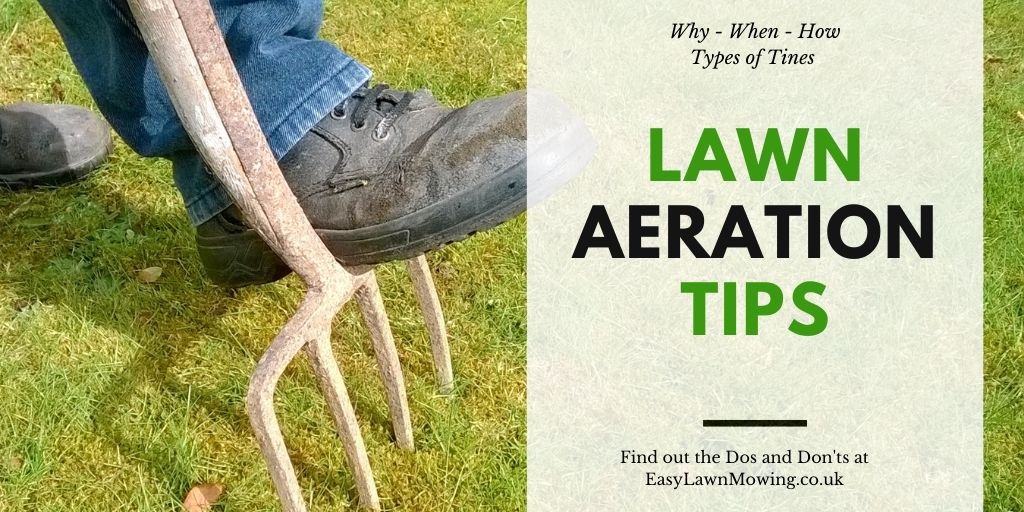


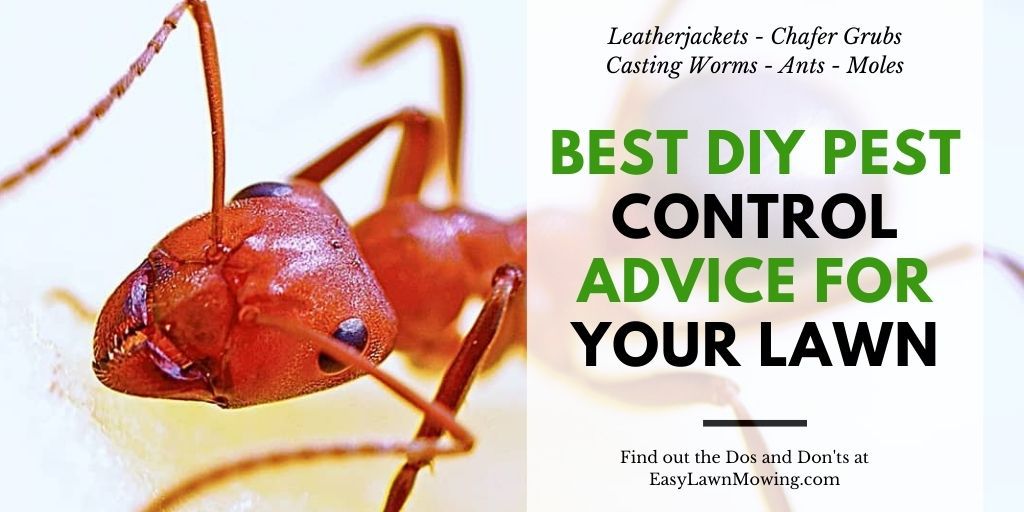
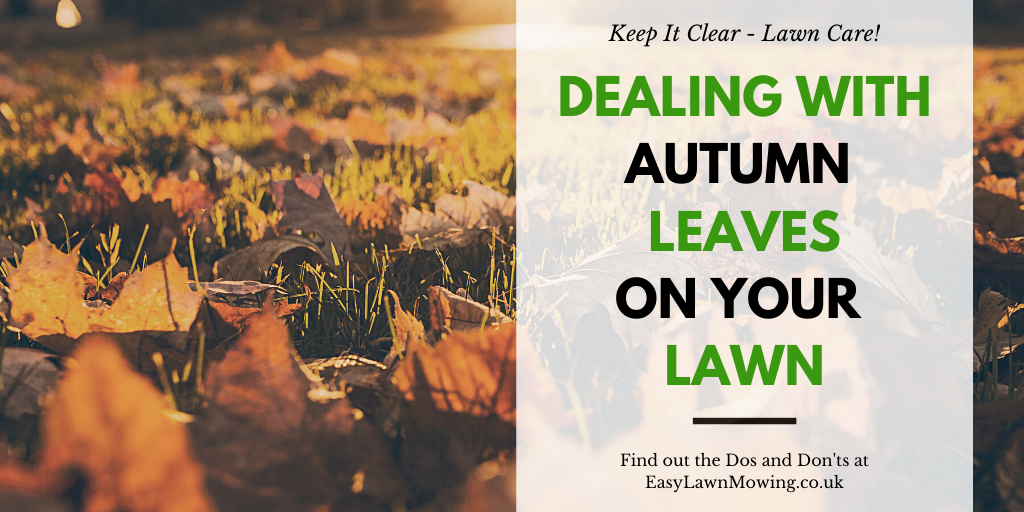
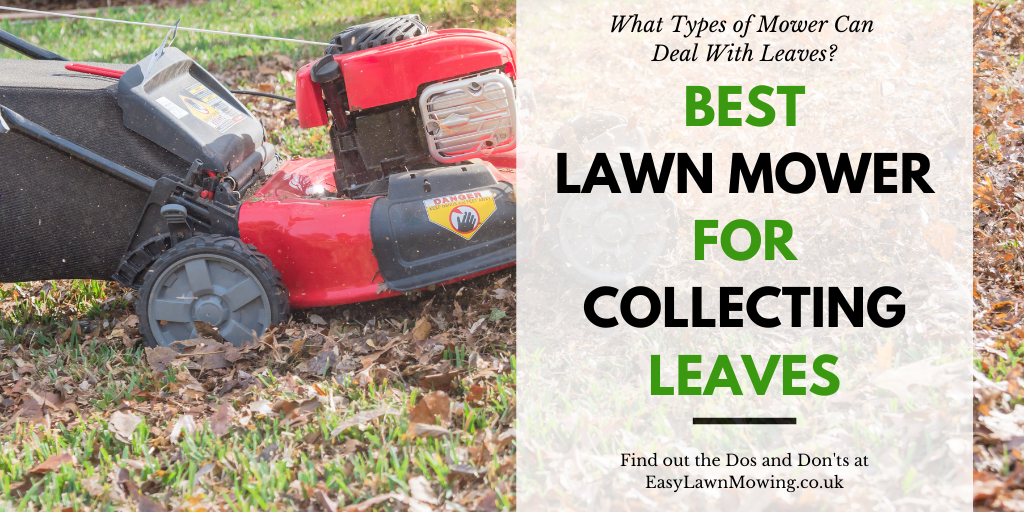

Mark,
This is a great reminder for me to get the aeration done this spring. I have a pull behind tine aerator. It works well to use a couple of weeks before adding spring fertilizer. I use my aerator on the second or third mowing of the spring season, is this a good time or should I wait until later. I live in the Midwest of the US.
John
Yeah seeing as you live in the US you will be totally fine aerating in the spring. It’s just us here in the UK that should consider doing it more often, because of the wet weather. Allow if you seem to be having a little more rain than usual then maybe try aerating again in the damaged areas using solid or chisel tines.
Thanks for the comment, I’m glad you enjoyed the post and if you have any more questions then just let me know :-)
Great information on lawn aeration. I had never really thought much about this, and in all the years I have owned a home and taken care of my yard, I have never aerated the lawn. I love a nice yard, and just purchased a new home in Florida. The yard is definitely not up to my standards. So should I start with the aerating to see if that helps? It looks dry and suffocated (for lack of a better description.)
Contrats on the new home! I hope it’s all you’re looking for.
No I wouldn’t aerate yet seeing as it’s looking dry, instead just wait until the lawn is moist again. You don’t want the holes to crack open so for now just focus on mowing, watering and fertilising.
Thanks for the comment and if you have anymore questions then just let me know :-)